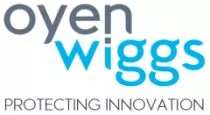Significant amendments to the Trade-marks Act were passed in 2014 and will come into force on 17 June 2019. These amendments aim to modernize Canadian trademark laws and practice, as Canada moves to accede to major international IP treaties, including the Singapore Treaty, the Madrid Protocol, and the Nice Agreement. These amendments will affect how Canadian trademark applications are filed, examined, registered and maintained. Some highlights are discussed below.
"Use" Requirement for Registration Eliminated
Currently, a trademark application may be filed on the basis of actual use, proposed use in Canada, and/or foreign registration and use abroad. A trademark application based on proposed use will not mature into a registration until the mark is used in Canada and a Declaration of Use is filed.
The legislative amendments eliminate filing grounds and commencement of "use" as a registration requirement. Thus, as of 17 June 2019, an application can be filed without specifying any filing grounds and a Declaration of Use will no longer be required for an application to mature into a registration. This means that:
- pending applications that have not been advertised before 17 June 2019 can optionally be revised to remove filing grounds; and
- pending applications for which the only outstanding formality is filing of a Declaration of Use can proceed to registration simply by paying the registration fee after 17 June 2019.
In the absence of a use requirement for registration, we expect to see increased filing activity in Canada, including more trademark troll filings. Thus appropriate defensive filings in Canada should be considered, preferably at an early date to block subsequent filings by others.
Use Still Required for Enforcement and Maintenance
Although the legislative amendments eliminate the use requirement for registration, use is still relevant. In particular, use is required to enforce a trademark registration within three years of registration. Further, after three years of registration, a registration may be expunged or restricted for non-use if the trademark is not used within any consecutive three-year period in association with all of the goods and services covered by the registration. Additionally, the lack of use in Canada or an intention to use the trademark in Canada will be a ground of opposition.
Nice Classification & Fees
Currently, applicants and registrants are not required to classify their goods and/or services according the Nice Classification. Filing and renewal fees are flat and not based on the number of Nice classes of goods and services.
The legislative amendments require that applicants and registrants classify their goods and/or services according the Nice Classification. Filing and renewal fees will be assessed on a fee-per-class basis. For example, the new filing fee will be $330 for the first class and $100 for each additional class of goods and services. This is to be contrasted with the currently flat filing fee of $250 combined with a $200 registration fee, regardless of the number of classes of goods and services.
It would be cost effective to file multi-class trademark applications before the amendments come into force on 17 June 2019 to benefit from the current flat filing fee. Similarly, payment of renewal fees prior to 17 June 2019 will allow holders of multi-class registrations to benefit from the current flat fee regime regardless of the number of Nice classes covered by their registrations, whereas payment of renewal fees after 17 June 2019 will involve higher costs for multi-class registrations.
Shortened Renewal Period
Currently, a trademark registration must be renewed every 15 years. The legislative amendments reduce this renewal period to 10 years for registrations issued after 17 June 2019, and for registrations with an effective renewal date that is after 17 June 2019. This means that, although renewal costs can be lowered by paying the renewal fees prior to 17 June 2019, if the renewal deadline is after that date, the shorter 10-year term will apply.
Madrid Protocol
As of 17 June 2019, Canada will become a member of the Madrid Protocol. The Madrid Protocol provides a centralized system for filing, registering, and managing trademarks worldwide. A single application under the Madrid Protocol can afford trademark protection in up to 119 countries.
Relaxed Requirements for Claiming Priority
After the new legislation comes into force, it will be possible to claim priority to an application filed in any country that is a party to the Paris Convention, not just the country of origin of the applicant.
Divisional Applications
The legislative amendments make it possible to divide and merge applications in Canada. This can be a useful strategy during prosecution and opposition. For example, an applicant may carve out some problematic goods and/or services that are subject to a confusion objection and include them in a divisional application while the rest of the original application proceeds to registration. When the divisional application proceeds to registration, it may be merged with the original registration so only one renewal fee applies.
Expanded Definition of "Trademark"
The legislative amendments expand the definition of trademark to include non-traditional trademarks: a sound, hologram, moving image (i.e. motion mark), scent, taste, colour per se, a three-dimensional shape, a mode of packaging goods, a texture, or a positioning of a sign. These non-traditional trademarks are registrable if they have acquired distinctiveness at the filing date of the application. During examination, Examiner will be able to make distinctiveness objections and request evidence of acquired distinctiveness in Canada. Such evidence may be filed in the form of an affidavit or statutory declaration.
Concluding Remarks
The legislative amendments will significantly change Canada's trademark law. Applicants and registrants are encouraged to develop strategies as to how they can take advantage of the current trademark registration system and prepare for the new system.
To view the original publication click here
The content of this article is intended to provide a general guide to the subject matter. Specialist advice should be sought about your specific circumstances.

